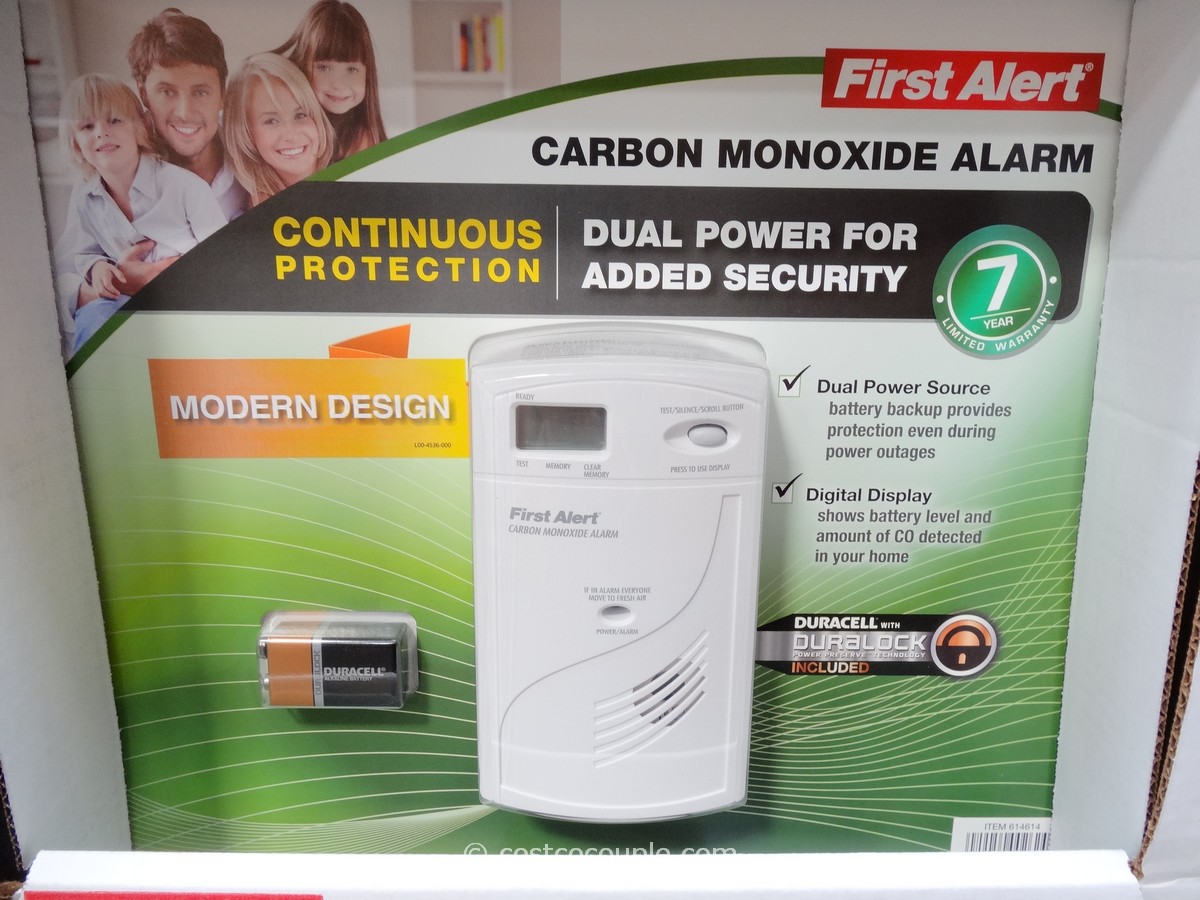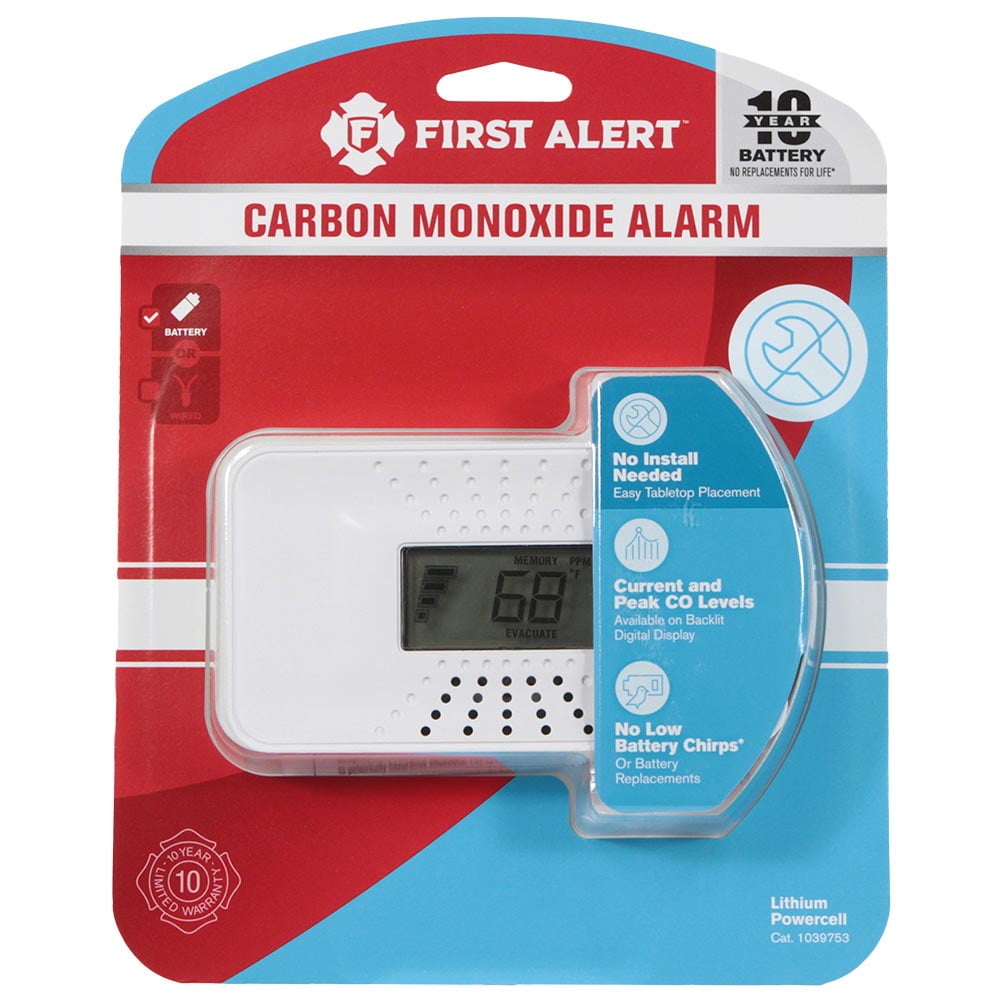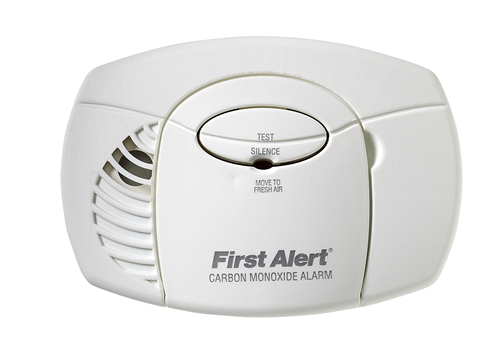

Gently vacuum your smoke alarm regularly using the soft brush attachment. Alarms may look clean, but dust can accumulate inside the cover, even in newly built homes.
FIRST ALERT CARBON MONOXIDE ALARM MODEL CO1210 FULL
First Alert® safety products offer full lines of Photoelectric, Ionization and Combination Smoke Alarms. For maximum protection, use both types of technology on each level and in every bedroom of your home. Sources of these fires may include cigarettes burning in couches or bedding. Photoelectric Sensor Technology - Smoke Alarms using photoelectric sensor technology are generally more sensitive than ionization technology at sensing large smoke particles, which tend to be produced in greater amounts by smoldering fires, which may smolder for hours before bursting into flame. Sources of these fires may include paper burning in a wastebasket, or a grease fire in the kitchen.

Ionization Sensor Technology - Smoke Alarms using ionization sensor technology are generally more sensitive than photoelectric technology smoke detectors at sensing small particles, which tend to be produced in greater amounts by hot, flaming fires, that are consuming combustible materials rapidly and may spread quickly. Smoke particles of a varying number and size are produced in all fires. There are generally two types of smoke detectors - ionization smoke detectors and photoelectric type smoke detectors. The green power LED will start to blink indicating the ONELINK® detector is waiting for program data from one of the other existing ONELINK® alarms that are already set up. Once you hear the unit chirp, release the test button. Press and hold the test button and then close the battery drawer. Insert the batteries into the battery drawer of the next detector. Simply open the battery drawer of the second detector and repeat steps 1 through 3. If more than two minutes pass, the green power LED will stop blinking. ADDING AND LINKING ADDITIONAL ONELINK® ALARMS NOTE: To create your integrated smoke detector system, steps 1 through 3 below need to be completed within two minutes. Alarm Will Say: " location saved." If no location is chosen: "No location saved." Your Alarm has now been programmed for the location of your choice. After you hear the location of where you are placing the Alarm, Press & Hold the Test Button. Alarm will say: "To save location, press and hold test button after location is heard." The ONELINK® smoke detector will speak list of locations. Press & Hold Test Button if you would like to program the location or change the location of the alarm.

The ONELINK® detector will then say "To select location, press and hold test button now." 2. Alarm will say: "Welcome, First Alert® Smoke Alarm." It will then say "No location programmed" if this is the first time the device has been activated, or " location programmed" when changing batteries. Help protect your family from the poisonous gas with CO and smoke detectors from First Alert, the most trusted brand in fire safety.It is important to follow these steps carefully when programming your First Alert® ONELINK® smoke detectors. First Alert offers a variety of CO detectors to meet your family’s needs: Detectors should be tested monthly, and batteries replaced at least every six months to ensure the detector is functioning properly. The National Fire Protection Association recommends installing a carbon monoxide detector on every level of your home and inside each bedroom. Carbon Monoxide SafetyĬarbon monoxide gas can only be detected by a CO alarm. Carbon monoxide detectors are the only way to detect this poisonous gas to help provide an early warning. Sources of carbon monoxide are any fuel burning devices, such as your stove, furnace or water heater. What is Carbon Monoxide?Ĭarbon monoxide (CO) is an invisible, odorless and tasteless poisonous gas. First Alert carbon monoxide alarms include battery, plug-in and tabletop options.


 0 kommentar(er)
0 kommentar(er)
